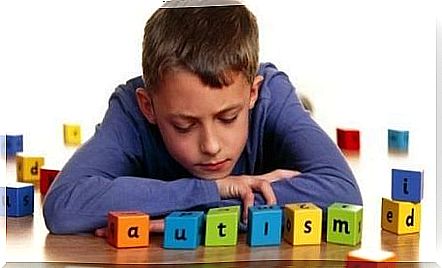“I’m Not Naughty, I Have Autism”, A Video Told In The First Person

The UK’s National Autism Society could not have run a more impactful campaign. Under the name “I’m not naughty, I have autism”, this organization managed to teach us what a child with this condition sees and feels during a distressing and revealing 90 seconds.
It is a video that seeks to generate social awareness in the population about the difficulties and problems that people with this disorder face on a daily basis. How it feels to live with autism is what this release is trying to convey to people.
A lesson in autism that will open your eyes
This short film premiered on World Autism Awareness Day is intended for society to focus on the sensory difficulties suffered by children with this disorder and how they affect them in their daily lives.
For this reason, during the minute and a half that this audiovisual production lasts, a child is seen entering a shopping center with his mother. The thousands of sensations, smells and sights are present and intensify to anguish and stun you.
As the child counts from one to ten in order to try to calm himself down, the lights and sounds of this mall begin to saturate him. However, the child does not manage to regulate himself in the face of so much stimulation and disturbance, which is why he can no longer bear the situation that this walk offers.
In addition to this eminently subjective perspective of the video, the child, turned into a voice-over, will try to generate some awareness about this condition that affects 1 in 68 boys: “I’m not naughty, I have autism. I have too much information ”.
What does a child with autism feel ?: this first person video is the answer
The idea of this video created by the English National Autism Society is to improve the understanding of the sensory crises of this pathology through these messages, but it does so without dramatizing, without sensationalism and without prominence. He carries it out clearly, with great quality and fidelity.

“Do not judge me, just understand me”, would be the subtext of this juicy minute and a half capable of explaining a lot, and teaching even more after experiencing in first person the reality faced by children with autism in common situations.
Well, as we see, all noise, down to the minimum, and any image becomes a hell of visual and auditory stimuli that ends up becoming really infuriating and suffocating. That is the day to day at school, the park or work.
Imagine that if the noise invasion or the brightness and the number of people on shopping trips are sometimes unpleasant for us, what will it be like for someone with autism? Who feels all those stimuli multiplied by a hundred. For this reason, it is important to put ourselves in their shoes to empathize with them.
Precisely what is shown in this material is hypersensitivity or hyposensitivity, very common disorders among people with autism. Then, every stimulus is perceived much more intensely. The worst thing is that they must calm themselves while their environment judges them gratuitously.
What are Autism Spectrum Disorders (ASD)?
The so-called Autism Spectrum Disorders suppose a condition in which the correct development of communication and language, social interaction and behavioral flexibility is altered at different levels.
Also, a recent study conducted by the Autism Speaks Foundation found that the incidence of autism is increasing by at least 17 percent each year. This condition has even become more common than Down Syndrome, or tuberculosis and childhood AIDS.
In parallel lines, the World Health Organization (WHO) estimated in 2013 that approximately 70 million people worldwide have autism. This same organism defined the condition as “a complex developmental disorder of the brain.”
Watch the video below that shows, at least in a general way, what and how a person with autism feels, and share this article to help build a world that is more inclusive, understanding, empathetic and much less judgmental.










